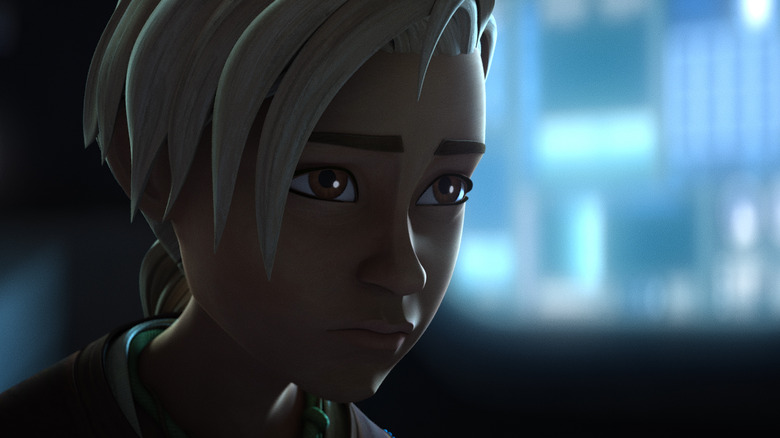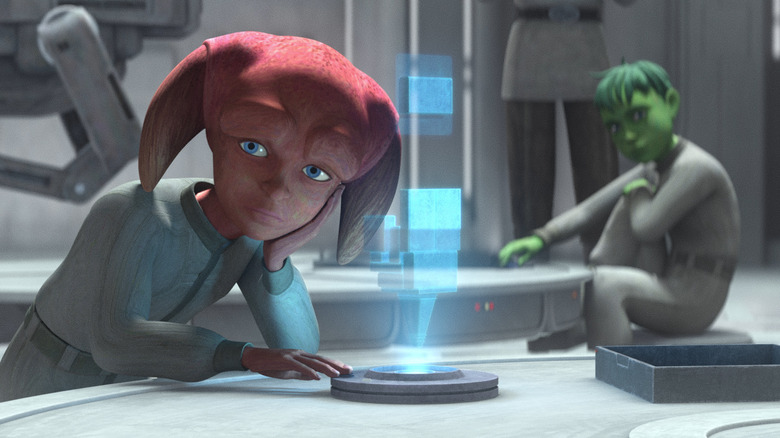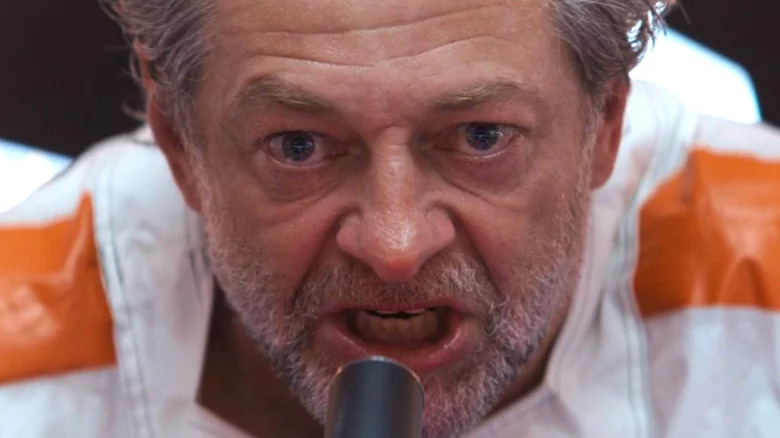The Bad Batch Is Channeling The Best Parts Of Star Wars For Its Final Episodes
This article contains spoilers for "The Bad Batch."
When "The Bad Batch" premiered, it felt like mostly an excuse to continue watching clones and hear Dee Bradley Baker be the best in the voice acting business, but not much else. Before long, however, it quickly became clear that there was more to "The Bad Batch" than first met the eye. The animated show poignantly explores the idea of veterans coming home from war and finding that there is no place for them — at least not as they expected. It also showed the transition from Republic to Empire and how clones were replaced by conscripted stormtroopers.
Like every animated "Star Wars" project before it, "The Bad Batch" grew up and became darker each season. This third and final season is the darkest of the show, doing away with the side quests that at times got in the way of the main story in past seasons, and instead focusing squarely on the horrors of the imperial facility on Tantiss and its connection to experiments with M-count and the emperor's personal experiments with immortality.
After Omega escaped the facility at the start of the season together with Crosshair, she was captured again when she sacrificed her freedom to save the people of Pabu.
In the latest episode, The Batch teamed up with former enemy, Vice Admiral Rampart, to reach Tantiss and rescue Omega. But before they arrive, she's already planning her own escape. It is through this jailbreak plot line that "The Bad Batch" echoes an essential element from the "Star Wars" franchise. That's because "Star Wars" is not only about wizard monks, space princesses, and evil empires, it is also a space prison break franchise.
One way out
Watching Omega with the other Force-sensitive kids on Tantiss watch out for guards, testing out the walls for a passageway, and planning their escape immediately made me think of "Andor" and the Narkina 5 arc.
That remains, to date, the greatest story ever told within the "Star Wars" franchise — a poignant, emotionally charged, tightly written and paced, exquisitely acted by Andy Serkis, thrilling piece of storytelling. The scenes in the prison both showed the horrors of the Empire and the sacrifice and bravery of the Rebellion (in all of its forms).
We have spent over 15 years getting to know and care about the clones as people, not just as soldiers or numbers. To then watch "The Bad Batch" portray the Empire treating them as numbers again is heartbreaking. Making matters worse is that the Empire not only tossed them aside, but reprogrammed them to be mindless assassins, used them for experiments, and locked them up on Tantiss.
Before the Empire used forced labor on Narkina 5 to build the Death Star in secret, they were secretly experimenting on those who were created to defend the Republic. Add to that the kidnapping and experimenting of Force-sensitive children, and it's hard not to want Tantiss to blow up in pieces.
A history of prison breaks
"Andor" is far from the first time "Star Wars" has given us an exciting prison break, because they are as essential to the franchise as lightsabers and Wookiees. Ever since the very first "Star Wars" movie when Luke, Han, and Chewie rescued Leia on board the Death Star, the franchise has mined great thrills and entertainment out of seeing people break into prisons and rescue those inside.
It makes sense, of course. Prison breaks are thrilling, they have a clear objective, a sense of place, and obvious antagonists. Before they blew up Alderaan, we hated the Empire for kidnapping Leia and torturing her. Before Jabba sent Han to his execution in the Sarlacc pit, we saw him literally hang the smuggler as a decoration in his palace for his amusement. Prisons are a great and easy way to portray themes of haves and have-nots, to make the audience root for the escapees while despising the captors, and to portray power dynamics and abuse of power even in ways audiences of all ages can understand.
"The Bad Batch" is headed to a violent, explosive confrontation on Tantiss that resolves the fate of Clone Force 99 by the time it all ends. But before it, we're getting another thrilling prison escape in the galaxy far, far away. If that's not a sign that this is an essential story within the franchise, I don't know what it is.


